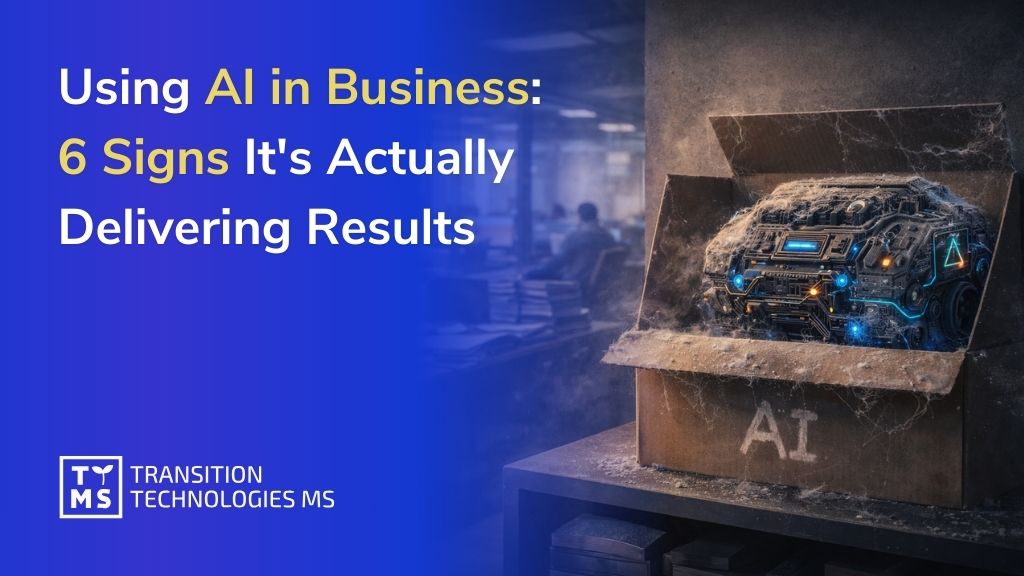Starting in 2025, thousands of companies across the European Union will face new ESG reporting obligations under the Corporate Sustainability Reporting Directive (CSRD). Businesses will be required to provide detailed information about their environmental and social impact, as well as their governance practices, in accordance with the European Sustainability Reporting Standards (ESRS). This marks a significant shift that requires both organizational preparation and the implementation of appropriate tools.
In response to these challenges, companies are increasingly turning to modern solutions such as Salesforce Net Zero Cloud, which automates data collection and ensures regulatory compliance. In this article, we explain how to prepare your company for mandatory ESG reporting and how technology can simplify the process.
1. What Is a Sustainability Report?
A Sustainability Report is a document in which an organization presents information about its impact on the environment, social issues, and corporate governance. The goal is to provide transparency about the company’s ESG (Environmental, Social, Governance) activities.
1.1 What Does a Sustainability Report Include?
Typical contents include:
- Greenhouse gas emissions (GHG) – covering Scope 1, 2, and 3 emissions
- Resource consumption – energy, water, raw materials
- Waste management – amount of waste generated, recycling efforts
- Social impact – employment policies, gender equality, workplace safety
- Corporate governance – transparency in management, business ethics, anti-corruption measures
- Community engagement – social initiatives, cooperation with NGOs
1.2 Why Is Sustainability Reporting Important?
- Regulatory requirements – in the EU, large companies must report in line with the CSRD
- Stakeholder trust – investors, customers, and partners increasingly expect ESG transparency
- Risk management – helps companies identify and mitigate environmental and social risks
- Brand building – sustainability-conscious companies gain a competitive edge
1.3 Reporting Standards
Commonly used reporting standards include:
- GRI (Global Reporting Initiative) – the most popular and comprehensive framework
- SASB – focuses on disclosures relevant to investors
- TCFD – recommendations for disclosing climate-related risks
- CDP – climate data disclosure system
- GHG Protocol – international standard for measuring and reporting greenhouse gas emissions
- ESRS (European Sustainability Reporting Standards) – developed by EFRAG for companies subject to CSRD
1.4 Who Publishes Such Reports?
Primarily:
- Multinational corporations
- Publicly listed companies
- Financial institutions
- Large enterprises in the EU (mandatory from 2024/2025 under CSRD)
2. How to Prepare Your Company for Mandatory ESG Reporting (CSRD)
Implementing mandatory ESG reporting in line with the CSRD directive requires both technological and organizational changes. Here are five key steps every organization should take:
1. Understand the New Regulatory Requirements
- Familiarize yourself with the CSRD directive and reporting standards (ESRS, GRI, TCFD).
- Identify which aspects of your business are subject to reporting.
- Determine your compliance timeline (for many companies, this starts in 2025 for the 2024 reporting year).
2. Assess Your Organization’s ESG Maturity
- Evaluate whether your company already collects ESG data and how it is gathered.
- Identify gaps: missing data, inconsistent sources, lack of systems for data aggregation.
- Conduct a gap analysis to assess compliance readiness with CSRD requirements.
3. Build a Project Team and Engage Leadership
- ESG should not be siloed within a single department.
- Collaboration is needed across departments: finance, IT, operations, HR, and compliance.
- Management’s role: set ESG goals and align them with overall business objectives.
4. Invest in ESG Management Tools
- Move beyond spreadsheets and adopt professional solutions like Salesforce Net Zero Cloud.
- This enables:
- Automated data collection from multiple systems
- Compliance with reporting formats (e.g., ESRS)
- Emissions analysis and forecasting (Scope 1, 2, and 3)
- Transparent and auditable data
5. Establish a Continuous ESG Process and Culture
- ESG is not a once-a-year report — it’s an ongoing process.
- Plan for regular data updates, KPI reviews, and employee training.
Preparing your organization for mandatory ESG reporting under the CSRD is a complex process that requires a strategic approach, cross-departmental engagement, and investment in the right tools. It’s not just about meeting regulatory obligations — it’s about building a culture of ESG throughout the company.
Although implementing these changes can be challenging, the right technological support — such as Salesforce Net Zero Cloud — significantly simplifies the process.
3. What Is Salesforce Net Zero Cloud?
Salesforce Net Zero Cloud is an advanced platform for comprehensive sustainability management and ESG (Environmental, Social, Governance) reporting. It was developed in response to the growing need among companies to effectively monitor and reduce their carbon footprint.
Net Zero Cloud serves as a centralized repository for a company’s environmental data, collecting information from various sources such as:
- Energy consumption in buildings and facilities
- Emissions from corporate transportation
- Waste management
- Emissions across the value chain (Scope 3)
The platform transforms this raw data into actionable insights and analytics, supporting informed business decisions aimed at sustainable growth.
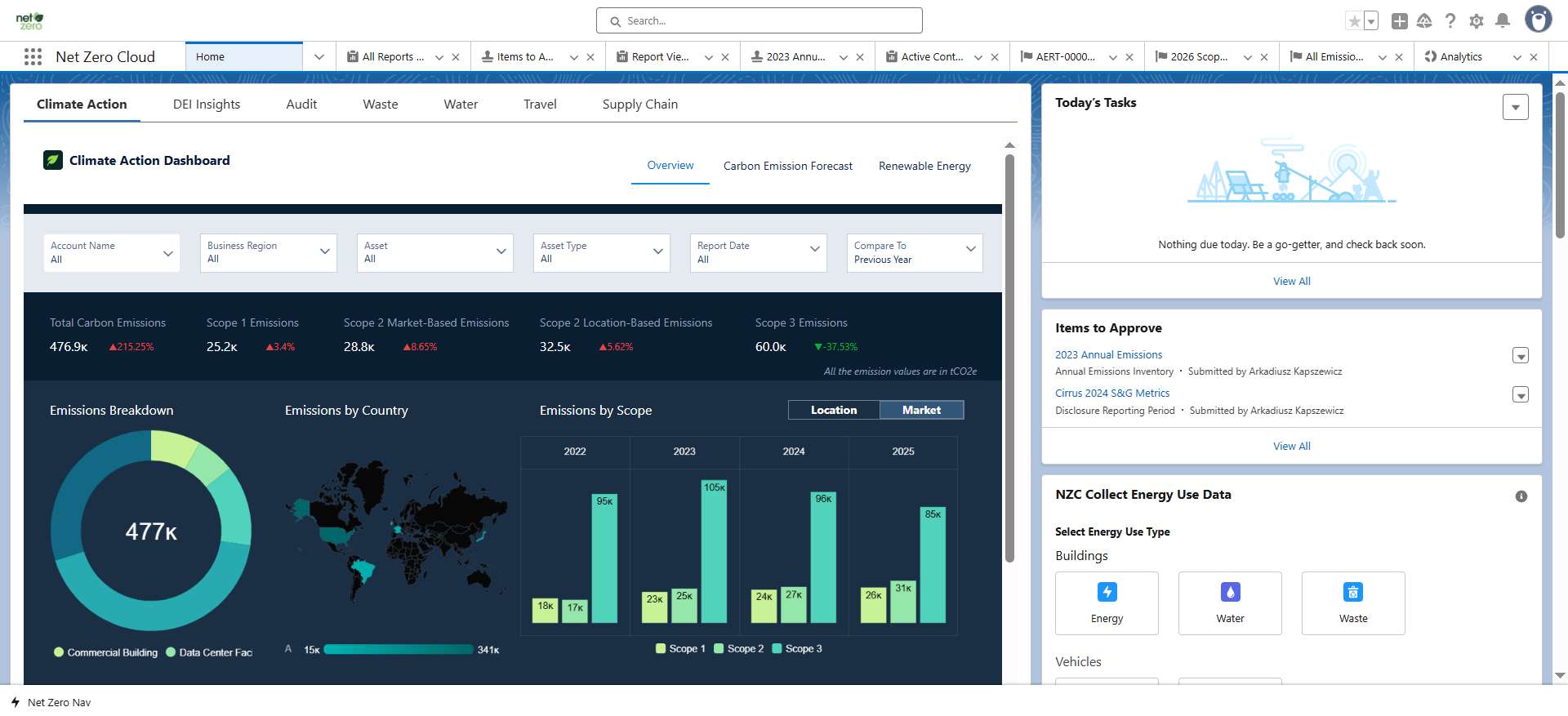
3.1 Key Advantages of Net Zero Cloud
Salesforce’s solution stands out thanks to several important features:
- Versatility – a platform adaptable to various industries and organization sizes
- Scalability – grows alongside your company and evolving reporting needs
- Regulatory compliance – automatically aligns with CSRD and other reporting standards
- Ease of integration – seamlessly connects with existing Salesforce systems and other business tools
Thanks to these qualities, both small companies beginning their sustainability journey and large multinational corporations with complex structures can effectively benefit from this solution.
4. How Does Net Zero Cloud Work?
Salesforce Net Zero Cloud operates as a comprehensive emissions management and ESG reporting system, leveraging advanced technology to transform how organizations track their carbon footprint.
4.1 Automated Data Collection and Integration
At the core of the platform is the automation of data collection and integration from various organizational sources. By utilizing tools like MuleSoft, the platform:
- Eliminates tedious, manual data entry
- Saves time
- Minimizes the risk of human error
- Ensures consistency and reliability of the collected data
4.2 Platform Features and Capabilities Overview
Net Zero Cloud offers a powerful suite of features designed to support a holistic approach to sustainability management:
- Climate Action Dashboard – an interactive interface providing a comprehensive view of emissions, resource consumption, and progress toward climate goals. It enables real-time tracking of ESG metrics, comparison with targets, and identification of areas requiring action.
- Detailed Emissions Tracking by Scope (Scope 1, 2, and 3) – in line with the Greenhouse Gas Protocol, the platform allows for identifying and classifying emissions across all three scopes, providing a clear picture of the organization’s total carbon footprint. This supports reporting in compliance with international standards, including CSRD and GRI.
- Scope 3 Emissions Hub – a dedicated module for monitoring emissions across the entire value chain, including suppliers, logistics partners, and other external stakeholders. It enables data collection from multiple sources, normalization, and climate risk assessment in a B2B context.
- Scenario Simulation – an advanced analytics tool that models future emissions based on strategic decisions (e.g., switching suppliers, investing in renewable energy, upgrading machinery). This functionality helps companies not only respond to current challenges but also proactively plan and optimize their long-term climate strategies.
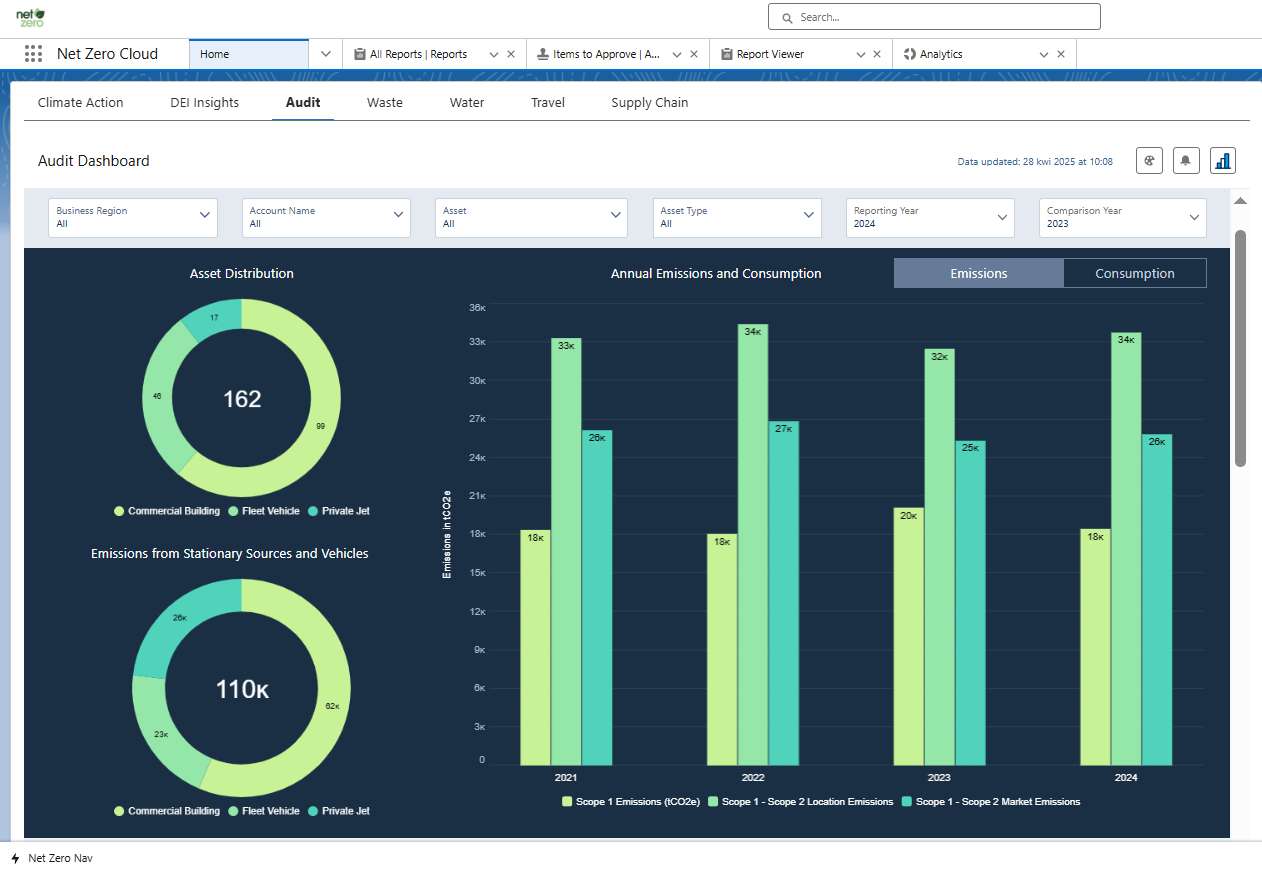
4.3 Emissions Data Management
Managing emissions data in Net Zero Cloud is a multi-step process:
- Collecting raw data on energy consumption, transportation, and other emission sources
- Automatically converting this data into CO₂ equivalents using built-in emission factors
- Consolidating the information into a central repository – a single source of truth
- Monitoring progress toward reduction goals with real-time tracking capabilities
This centralized approach simplifies audits and certifications while also enhancing cross-department collaboration, allowing sustainability, operations, and finance teams to work with the same up-to-date information.
4.4 The Role of Artificial Intelligence in ESG Reporting
Net Zero Cloud leverages advanced AI and machine learning algorithms, including Salesforce’s Einstein technology, to optimize ESG reporting processes:
- Automatically analyzes historical emissions data to identify trends and anomalies
- Intelligently fills data gaps using predictive models, flagging inconsistencies and suggesting corrections
- Identifies high-emission areas and recommends potential reduction actions
- Offers advanced data visualization through integration with Tableau
This predictive analytics approach enables organizations to act proactively rather than simply reacting to issues after they occur.
5. Benefits of Implementing Salesforce Net Zero Cloud
Implementing Net Zero Cloud provides organizations with a wide range of tangible benefits that go well beyond merely meeting ESG reporting requirements.
5.1 Accurate Emissions Tracking and ESG Data Management
Net Zero Cloud allows for precise monitoring of greenhouse gas emissions across Scope 1, 2, and 3 by consolidating data from multiple sources, including energy use, business travel, and supplier activity. This gives companies a comprehensive view of their carbon footprint and supports effective ESG data management.
5.2 Automated Reporting and Regulatory Compliance
The platform automates reporting processes and provides ready-to-use templates aligned with global standards such as the GHG Protocol, CDP, and CSRD. This simplifies compliance and enhances transparency for stakeholders.
5.3 Advanced Analytics and Forecasting
Thanks to its built-in analytics tools, Net Zero Cloud enables the modeling of different emissions reduction scenarios, forecasting of future emissions, and identification of areas needing improvement. This supports informed, strategic decision-making.
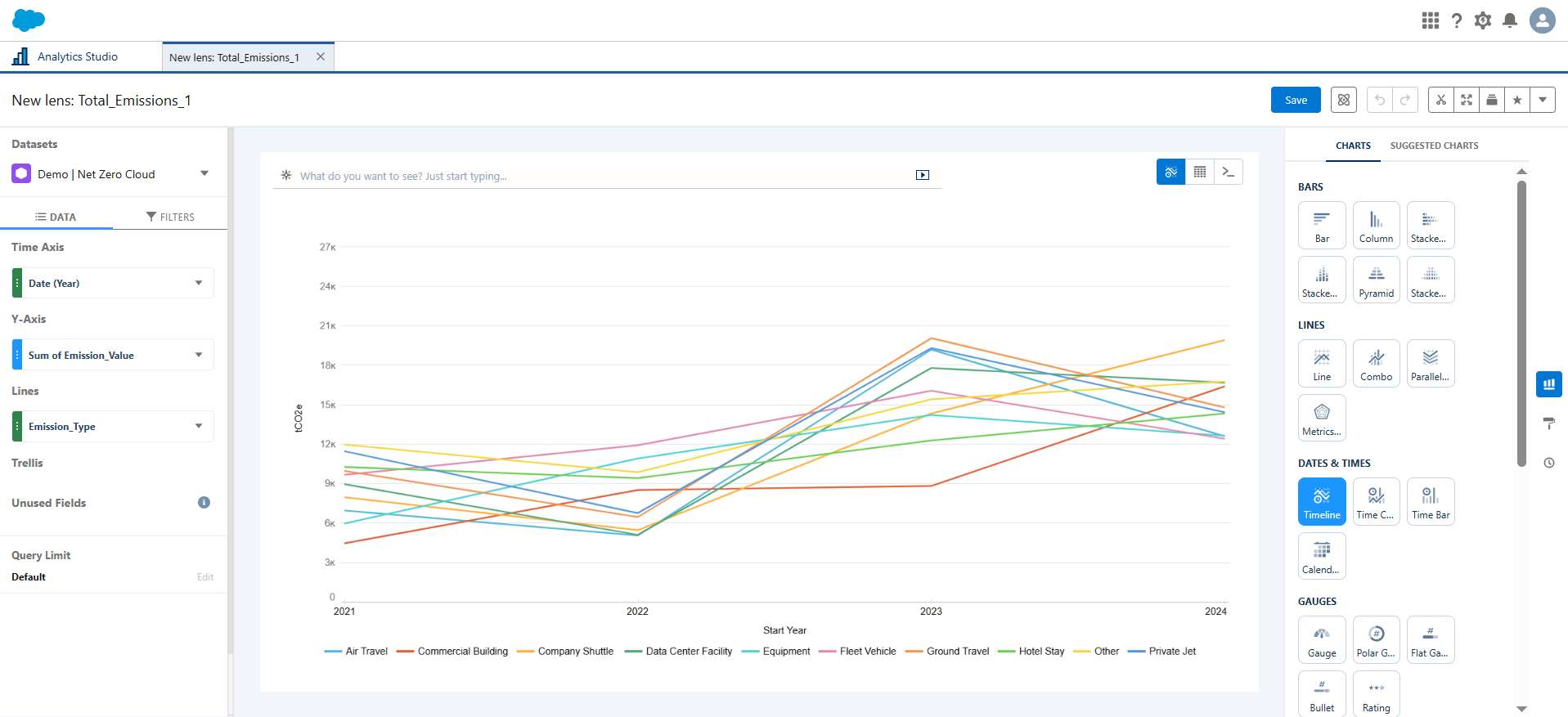
5.4 Supplier Engagement and Supply Chain Management
The platform facilitates collaboration with suppliers through dedicated portals, enabling data collection on emissions across the entire value chain. This fosters joint efforts toward reducing the carbon footprint and improving supply chain transparency.
5.5 Reduction of Operational Costs
By identifying areas with high energy consumption and emissions, companies can implement optimization measures that lead to reduced operational costs and improved energy efficiency.
5.6 Strengthened Reputation and Investor Appeal
Transparent reporting and tangible sustainability actions build a positive brand image, helping attract environmentally conscious investors and customers. Demonstrating ESG commitment can also become a key differentiator in competitive markets.
5.7 Scalability and Integration with the Salesforce Ecosystem
Net Zero Cloud is a flexible solution adaptable to the needs of organizations of all sizes and industries. Its integration with other Salesforce products—such as Sales Cloud and Service Cloud—enables unified data and process management across the enterprise.
6. How Different Industries Benefit from Implementing Net Zero Cloud
Deploying Net Zero Cloud offers tangible advantages across industries—each facing unique emissions sources, data structures, and regulatory expectations. Below are examples of how specific sectors can leverage the platform to meet ESG requirements and gain a competitive edge:
6.1 Manufacturing and Heavy Industry
- Real-time tracking of Scope 1 and 2 emissions (e.g., furnaces, production lines, fuel combustion)
- Identification of the most emission-intensive processes with optimization opportunities (e.g., upgrading equipment, switching to renewable energy)
- Proof of compliance with environmental regulations (e.g., EU ETS, ISO 14001 standards)
- Support in obtaining “green industry” certifications, increasing appeal to international partners
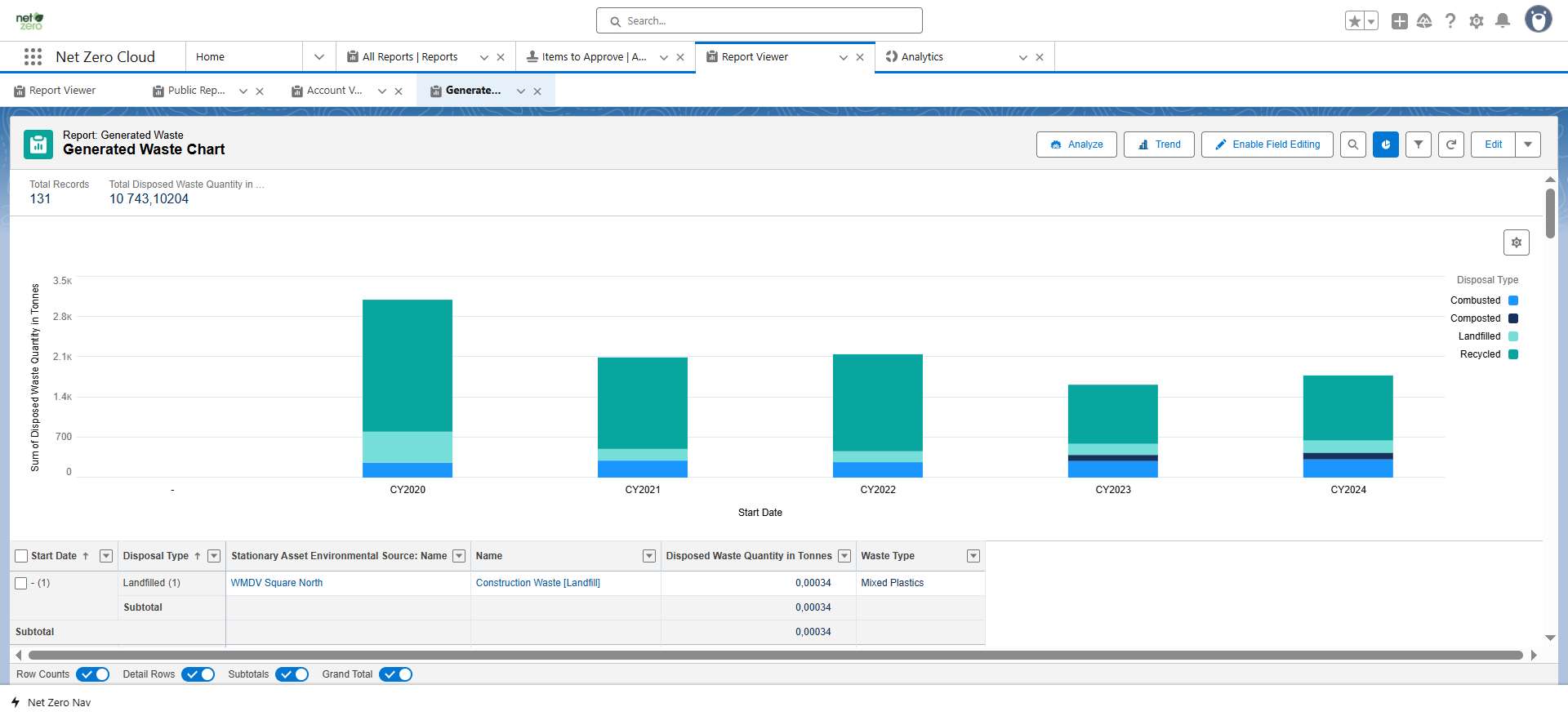
6.2 Transport and Logistics
- Detailed analysis of emissions from vehicle fleets (Scope 1) and deliveries (Scope 3)
- Scenario modeling capabilities (e.g., what if 20% of the fleet switched to electric vehicles?)
- Better management of fuel costs and CO₂ emissions
- A value proposition for e-commerce and retail clients, who increasingly require ESG reporting from suppliers
6.3 Banking and Financial Sector
- ESG scoring of clients and investments—integrating ESG data into credit and investment processes
- Compliance with the EU taxonomy and SFDR regulations (for investment funds)
- Building investor and client trust through transparent reporting of a portfolio’s climate impact
- Identifying climate-related risks (e.g., exposure to carbon-intensive sectors)
6.4 Retail and FMCG Sector
- Monitoring emissions throughout the supply chain (Scope 3)
- Better waste management and energy consumption tracking in stores and logistics centers
- Ability to label products as “low-emission” or “sustainable” based on system data
- Addressing consumer and retailer demands (e.g., from Lidl, Carrefour, Amazon) for climate accountability
6.5 Hospitality and Commercial Real Estate
- Managing energy usage in buildings (Scope 2) and optimizing HVAC system operations
- Supporting LEED/BREEAM certifications—Net Zero Cloud can serve as an audit foundation
- Tracking water consumption, waste emissions, and the carbon footprint of guests
- Competitive advantage in bids and for B2B clients focused on ESG criteria
6.6 Technology and IT Services
- Emissions from offices and data centers—integration with energy management systems
- Supporting corporate clients in their ESG strategies (Net Zero Cloud as part of service offerings)
- ESG reporting as a competitive edge in B2B sales and international tenders
These are just a few common use cases—Net Zero Cloud adapts to the specific needs of each industry, automates data collection from various sources, and supports both regulatory compliance and tangible competitive advantage.
Want to know how Net Zero Cloud can support your company? Contact us, and we’ll show you how to unlock the platform’s full potential.
7. Implementing Salesforce Net Zero Cloud with TTMS
Rolling out Net Zero Cloud is a complex process that requires not just technical knowledge but also a deep understanding of ESG principles and industry-specific needs. TTMS offers end-to-end support at every stage of implementation.
7.1 Our Implementation Approach
TTMS applies a methodology that combines proven project management practices with the flexibility to meet each organization’s individual requirements:
- In-depth preliminary analysis – understanding your business goals and ESG strategy
- Organizational maturity assessment – identifying available data sources and potential challenges
- Realistic implementation roadmap – setting clear milestones and expected outcomes
- Future-proof configuration – anticipating regulatory changes and sustainability trends
7.2 TTMS’s Unique Competencies and Experience
The TTMS team brings together unique capabilities, including:
- Deep expertise in Salesforce technologies
- Specialist knowledge of ESG standards and regulations
- Proven experience in business transformation projects
- The ability to align environmental goals with financial performance
7.3 Comprehensive Post-Implementation Support
TTMS goes beyond technical deployment, offering:
- Training programs tailored to different user groups
- Organizational change workshops to support adoption
- Ongoing system performance reviews
- Advisory services to optimize ESG strategy
By choosing TTMS as your implementation partner, your organization gains access to a multidisciplinary team of sustainability experts, enabling a holistic approach to ESG transformation and maximizing the business value of Salesforce Net Zero Cloud.
What is Salesforce Net Zero Cloud?
Salesforce Net Zero Cloud is a comprehensive sustainability management platform designed to monitor, analyze, and report ESG (Environmental, Social, Governance) initiatives. This advanced cloud solution:
- Integrates seamlessly with the broader Salesforce ecosystem
- Tracks greenhouse gas emissions across all three scopes (Scope 1, 2, and 3)
- Automatically converts data on energy consumption, transportation, and other activities into CO₂ equivalents
- Enables both real-time monitoring of the carbon footprint and forecasting of future emissions
A standout feature of Net Zero Cloud is its robust capability to track Scope 3 emissions, which are often the most challenging for companies striving for carbon neutrality.
What is a sustainability report?
A sustainability report (or ESG report) presents a comprehensive overview of an organization’s performance and initiatives in the environmental, social, and governance domains. It goes beyond traditional financial reporting and typically includes:
- Greenhouse gas emissions and reduction strategies
- Natural resource usage (water, energy, materials)
- Waste management and circular economy practices
- Diversity, equity, and inclusion in the workplace
- Supply chain practices and human rights policies
- Community engagement and philanthropy
- Business ethics and governance transparency
A high-quality ESG report is based on reliable data, follows recognized reporting standards, focuses on material issues for the industry and stakeholders, and presents both successes and challenges. It also includes specific, measurable goals and performance indicators.
What are the key challenges in implementing Net Zero Cloud?
The three main challenges organizations typically face when implementing Net Zero Cloud are:
- Data challenges – identifying all emission sources and managing large volumes of data that must be collected and analyzed
- Knowledge gaps – Net Zero Cloud is a relatively new technology with limited implementation precedents to learn from
- System integration – transitioning from spreadsheets to a modern platform requires careful planning and often involves complex data integration issues
Effective strategies to overcome these challenges include:
- Partnering with experienced implementation experts
- Standardizing data collection processes
- Leveraging advanced analytics and visualization tools to transform complex data into actionable insights

